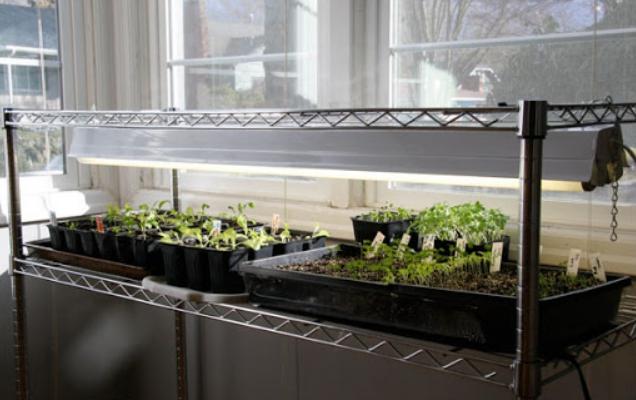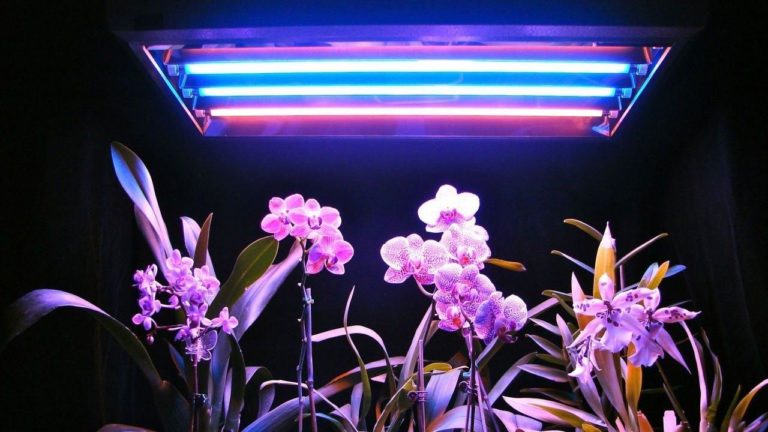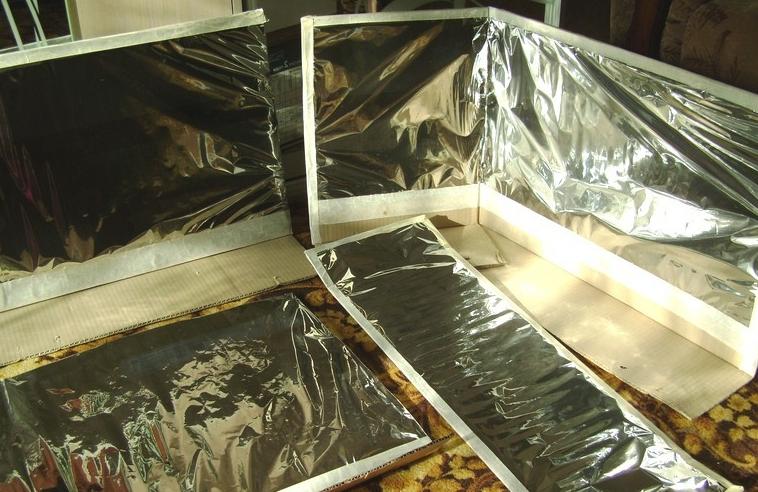Features of the lamp for growing seedlings at home
Phytolamps for seedlings provide optimal conditions for the growth and development of plants. With their help it is possible to maintain the right length of daylight so that crops are less sick and better adapted after transplanting. Different crops have different requirements for lighting, so the regime is chosen individually according to the recommendations on the seed package or from the horticulturist's handbook.
Backlight for seedlings - which lamp to choose
First of all, it is necessary to understand the features of the lamps, so as to understand what characteristics are important and how they can differ. Since sunlight consists of different wavelengths and spectra, you need to select lighting with these points in mind, as they depend on the impact on the plant backlight.
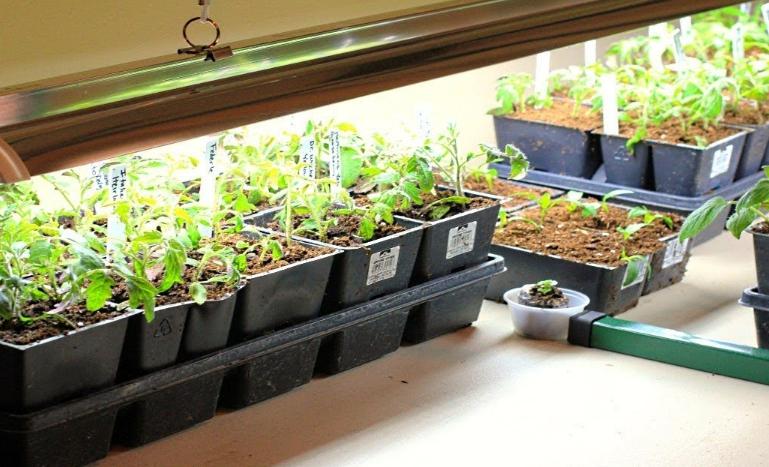
The red and blue spectra are most important for most types of seedlings. They directly affect photosynthesis processes in the cells as well as photomorphogenesis, which is responsible for normal growth, flower and ovary formation, and the size of the crop in the future. The situation is complicated by the fact that the spectrum ratio changes depending on the stage of development, so we must remember the following:
- Blue (440 to 485 nm) is very important after the emergence of seedlings, the rate of growth and development depends on it. This part of the spectrum makes the cells divide much more actively without stretching them out, which ensures the growth of a strong stem rather than a thin stem reaching for the window. Constant light ensures the growth of strong seedlings that do not overgrow and adapt well after transplanting.
- Red (625 to 730 nm) is very important for normal photosynthesis in the cells. It also affects the speed of seed germination, stimulates increased formation of root shoots. Future flowers are planted at the seedling stage, so red affects future yields as well.
- Orange (590 to 625 nm) is not as important because it has the greatest effect on increasing the number of set fruit. It also speeds up the ripening of vegetables and berries.
- Farther red (730 to 740 nm) Can inhibit seed germination. After sprouting during seedling development, this part of the spectrum affects the formation of leaves - their number, shape, size.
- Yellow-green (500 to 590 nm) does not directly affect the growth and development of seedlings. But at the same time with its help the light gets much better on the lower leaves, which are not directly illuminated, thereby improving photosynthesis and ensuring uniform development of plants.
- Ultraviolet light (320 to 395 nm) is also necessary, but only in small amounts. This part of the spectrum has a bactericidal effect, destroys many pathogens and strengthens plant immunity. Also ultraviolet improves resistance to temperature changes, which is important before transplanting seedlings.
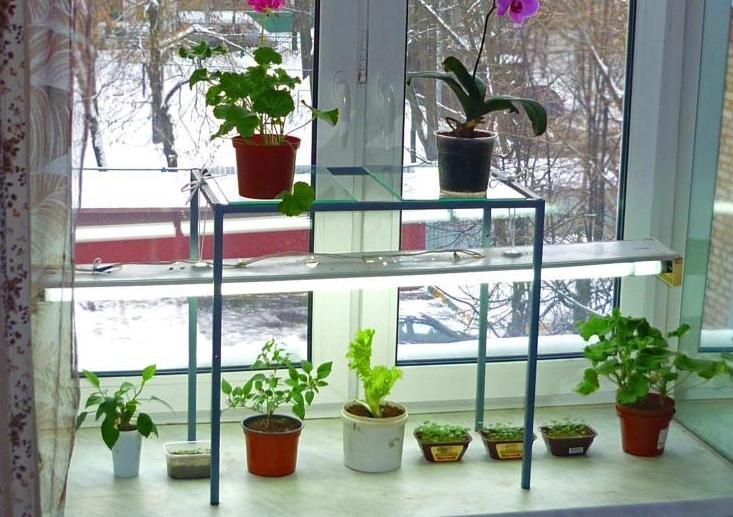
You can use both special equipment and improvised versions of lamps.
According to what parameters to choose
There are several criteria that any lamp for growing seedlings must meet. If you take them into account, even without experience, it is not difficult to find equipment with the right characteristics.
Illumination
Norms of illumination are measured in lux. 1 lux equals 1 lumendistributed over an area of one square meter. The indicator depends directly on the power of the bulbs and the height of their location above the plants, so the calculations use correction factors. The norms are as follows:
- Most crops need about 8000 lux per square meter.
- Eggplants, peppers, tomatoes, and other solanaceous crops need at least 6000 lux.
- Cucumbers, located on a window sill when additional lighting is needed from 3000 to 4000 lux.
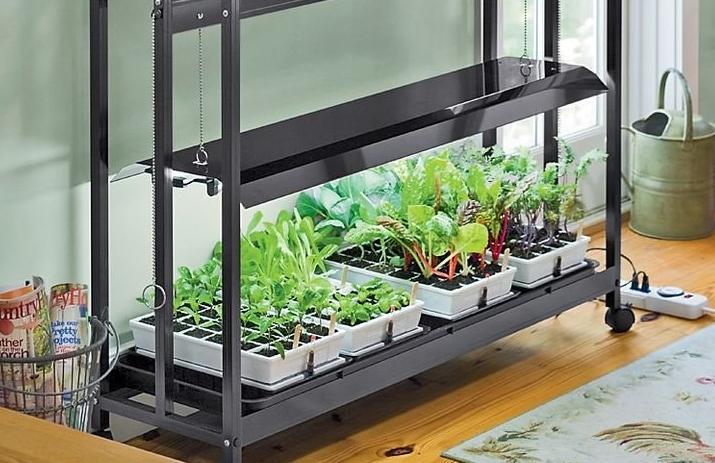
To choose the wattage of the lamps, you need to follow a simple calculation guide:
- Calculating the lighting area, you should measure the length and width of one or more containers and multiply them. You need the figure in square meters.
- Next, calculate the rate of illumination. Since the lamps are placed at a certain height, you need to use an index depending on their position. If it is 30 cm - 1.3, if 60 cm - 1.5.
- Multiply the desired illuminance index by the index, the result will be the power of the lamps in lumens.
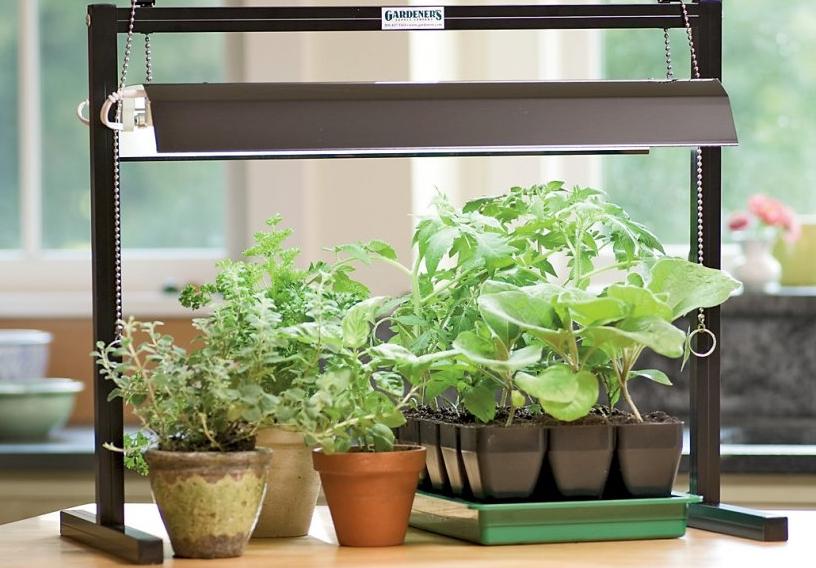
Example of calculation for a capacity of 0.5 m.sq.m. with a height of 60 cm. With a norm of 8000 lux the basic illumination should be 4000, but with a factor of 1.5 it will increase to 6000. This will require 5 incandescent 100 watt bulbs or 2 LED bulbs of 20 watt.
Spectrogram
This is what they call a graph that shows how much radiation the lamp gives off. For plants, it is important that the peaks fall between 420 to 460 nm and 630 to 670 nm. This information is always on the phyto bulbs, in other cases it may not be on the packaging. But you can find data online for all kinds of lighting equipment.
You should also pay attention to the infrared and far red parts of the spectrum, they should be small. This also applies to the other segments - ultraviolet, orange, yellow-green. The peaks should be clear and fall within the ranges specified.
If you choose specialized lamps, then The best solution is a special bicolor phyto lamp. But it can also be replaced by a universal full spectrum lamp, it will cost much cheaper, and it is easier to buy this type.
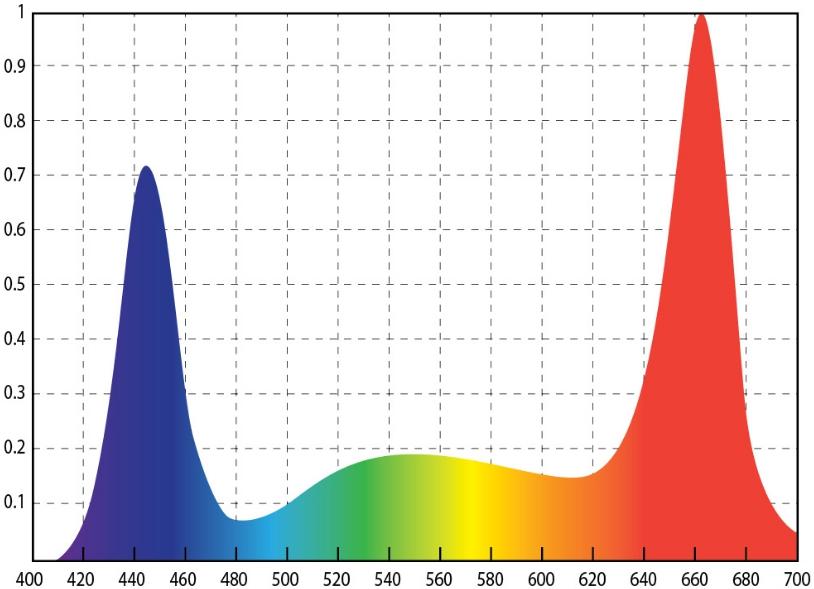
It is most advantageous to put exactly a special lamp, because it consumes electricity only for those parts of the spectrum that are necessary for seedlings. But this also takes into account the characteristics of plants. For example, cucumbers need much less red spectrum than tomatoes. If the plants are located on the window sill, then they are enough lamp with a red and blue range. But if the container stands in a darkened place or an enclosed box with its own microclimate, the best solution is equipment that is close in radiation to the natural light of the sun.
When choosing a full-spectrum lamp, it is worth selecting an option that is close to the sun's radiation. The optimal value is 6400 K, which is a cool white light.
Other characteristics
There are a number of criteria by which the lamp for seedlings is selected. All of them affect not only the quality of lighting, but also its cost and other aspects:
- Power consumption. Since the lights work for a long time, if the consumption of electricity is high, the costs will be much higher. If you use LED lights, the savings will be very large, they consume many times less energy than conventional options.The larger the luminaire - the higher the requirements for its energy efficiency.
- Ergonomic design of the luminaire. It should be easily adjustable to direct the light flux where needed. It is also important that there is no glare in the room, which creates discomfort for the eyes.
- Simple assembly and connection. You do not need to choose too complicated model, demanding to set up and conditions of use. It is important that the kit has simple and clear instructions. For safety, you can choose low-voltage versions with a 12-volt power supply, then the lamp will not cause damage to health, even if you accidentally damage the wiring.
- The degree of heating of the surface. Some types get very hot when working, which creates a risk of burns to the leaves of the plants. Because of this, they are raised higher, which reduces the efficiency of lighting. Often it is necessary to put an additional cooling system, which complicates the design and increases power consumption.
- The shape of the plafonds. If the containers for seedlings are oblong, you need to pick up lamps of the same format. And for square containers, standard models of round shape will do. It is possible to combine several lights, if necessary.
- Angle of light diffusion. The larger it is, the worse the light distribution is. The best way to adjust this figure is to use reflectors, which you can make yourself, using foil.
Do not skimp on the price of the fixture or lamp, due to the economical use of electricity unnecessary costs are quickly compensated.
Types of lamps
There are several types that are suitable for backlighting seedlings, each has pros and cons, which should be taken into account. Proceed from the features and the necessary characteristics of the lamps to understand what is the best fit.
Incandescent bulbs.
They are still used, although in quality this type is inferior to all analogues. The main advantages are such:
- Low price.
- Natural radiation, familiar to human vision.
- Ease of use.
But the disadvantages of incandescent lamps are much more than the advantages:
- The color spectrum is dominated by red, and there is little blue. Because of this, the seedlings will be pulled up, the stems will turn out long and thin.
- The service life rarely exceeds 1,000 hours.
- Most of the electricity is spent on tungsten filament glow and heat generation. The energy efficiency is low.
- The bulb gets very hot during operation, often causing burns on the leaves.
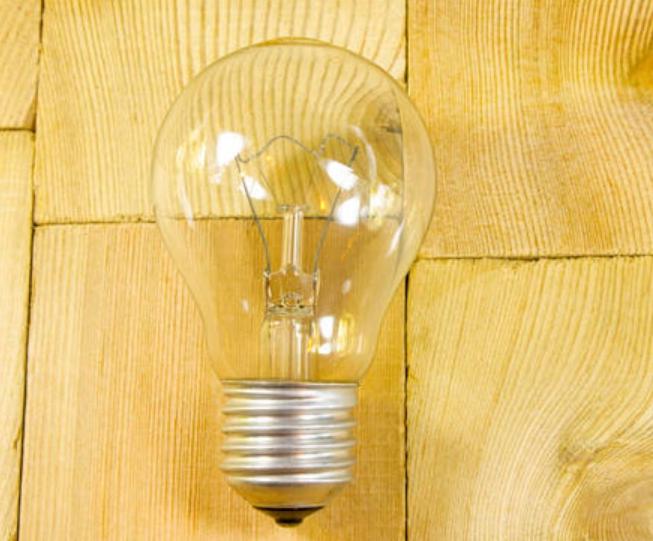
Put this option is worth as a temporary, if nothing else is at hand. In other cases, choose any other solution, as they are all superior to incandescent models.
It is best to buy incandescent bulbs marked "grow lights", in which the combination of red and blue spectra is close to the optimal.
Halogen models
An improved version of conventional bulbs, in which the bulb is pumped inert gas for better light output and longer life. Features include:
- You can choose a light with different brightness, which allows you to adapt it to different types of sprouts.
- The bulbs work from both standard voltage and 12 volt, which makes for a safe system.
- The bulb is much smaller in size, which saves space.
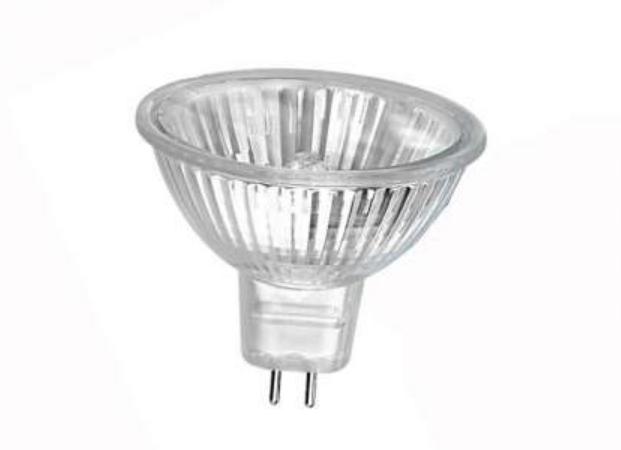
As for the disadvantages, there are quite a few, too:
- The surface heats up a lot during operation and can burn the leaves of the sprouts.
- Electricity consumption is high.
- Service life is about 2000 hours.
When choosing, be sure to check the spectrogram to choose the best option.
Fluorescent
About 5 years ago, this was the best solution for illuminating seedlings. The bulbs last about 10,000 hours, with an energy efficiency of 60 to 90 lumens per watt. The advantages are this:
- The light can be placed horizontally as well as vertically or at an angle.
- There are compact lamps for standard sockets or long bulbs, which is convenient for narrow containers.
- During operation, the surface is not heated, which allows you to place the lamp at any convenient height.
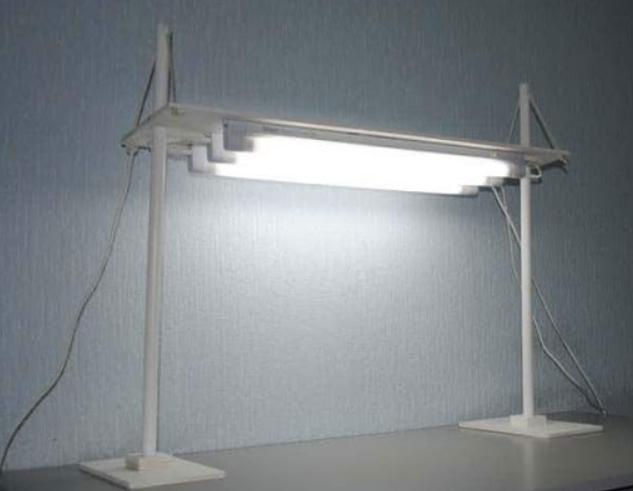
There are also disadvantages:
- The main part of these lamps gives a yellow-green spectrum.
- Over time, the quality of light decreases, so it is better to make a replacement every 1-2 years.
- Inside the bulbs there are mercury vapors, which requires caution when using, as well as disposal only in special containers.
It is worth choosing lamps marked LHB and LB, which give a cool white light.
LED bulbs for seedlings
This option is used most often, as it has many indicators that make it one of the best today:
- Lifetime is usually at least 50,000 hours. At the same time, quality diodes have almost no change in lighting performance over time.
- Luminaires can operate from any voltage, which allows you to assemble a safe system.
- The equipment is not harmful to people and the environment, and does not heat up during operation.
- A large number of models of different shapes and powers.
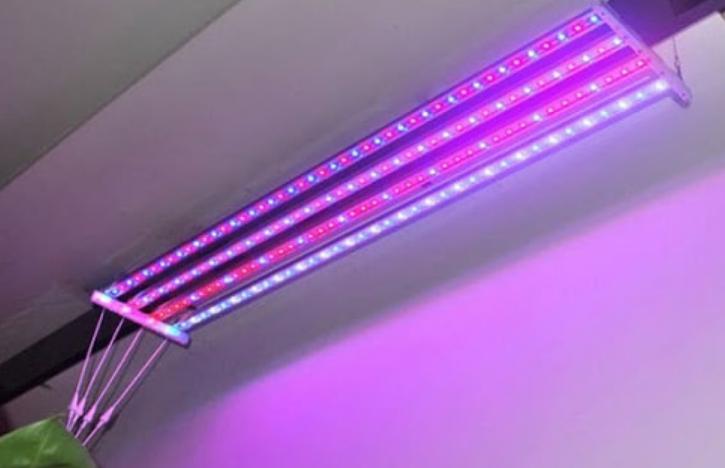
There are also a few disadvantages:
- Usually the light is directed to a small area, for a large capacity will have to put several elements of small power.
- There are a lot of low-quality products on sale that do not meet the stated indicators.
You can choose any light temperature, which is very important when buying a lamp for seedlings.
Induction lamps
A new option, well suited for additional lighting of plants. Since there are no electrodes in the design, it well tolerates surges and voltage fluctuations. The advantages are:
- Service life - up to 100,000 hours.
- When working, they do not heat, the light is uniform, without flicker.
- The characteristics of the light almost do not change.
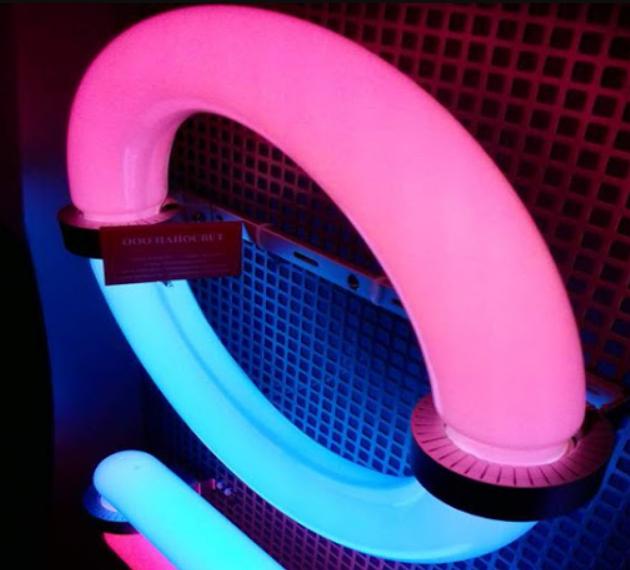
There are disadvantages to induction models:
- They cost more than analogues.
- It is necessary to put an additional power supply.
- Dispose of only in special places.
This video describes the experiment: under which lamps it is better to illuminate seedlings.
How to properly illuminate seedlings
Selecting lamps is not enough. To achieve the result, it is necessary to observe a number of recommendations to ensure optimal conditions for the development and growth of plants.
Distance from the lamp to the surface
In many respects, the location depends on the type of lamps, it is best to use LEDs as the most accessible and convenient. The height to choose according to the recommendations:
- After sowing the seeds, it is better to put the lamps at a height of 12 to 15 cm. High light intensity is important here, so that the sprouts have enough light to grow through the soil.
- When the seedlings appear, it is worth raising the lamp to a height of 15 to 20 cm. The exact distance should be chosen according to the situation. It is important that the light is distributed evenly and covers the entire area of the soil.
- In further cultivation of seedlings, maintain a distance of 20 to 25 cm. Remember that the plants are getting taller, so check the position and change it at least once a week.
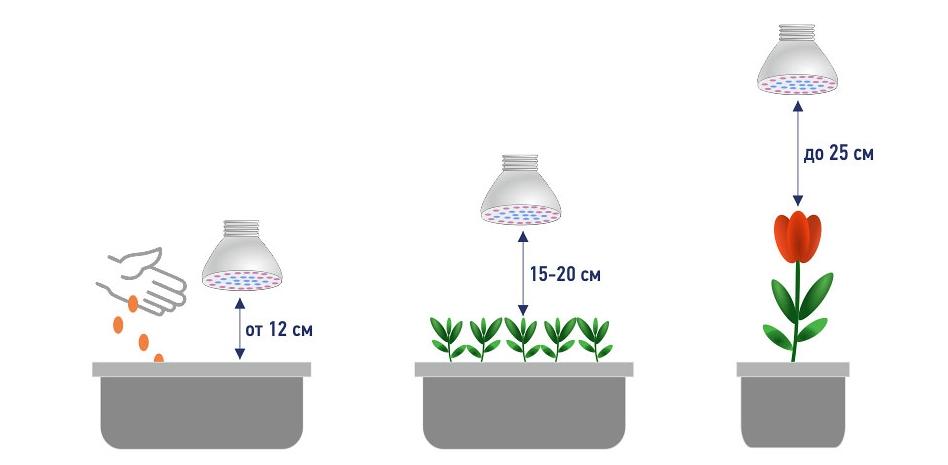
By the way! The distance is measured from the lamp to the top of the seedlings.
How long to turn on the lamps
We need to consider the culture and a few other aspects. It will not be very difficult to figure out:
- For tomatoes and other heat-loving plants, you need to provide lighting for 15-17 hours.
- Other crops require less time, usually 11-13 hours is enough.
- It is best to specify the optimal values on the seed package. You can find information online at specialized resources.
- Based on the length of the daylight hours to calculate how long the lamps should run. If it is cloudy outside, increase the time of illumination for maximum effect.
- It is better to turn on the lamp in the morning and evening, this is much more effective than the option of turning on once a day.
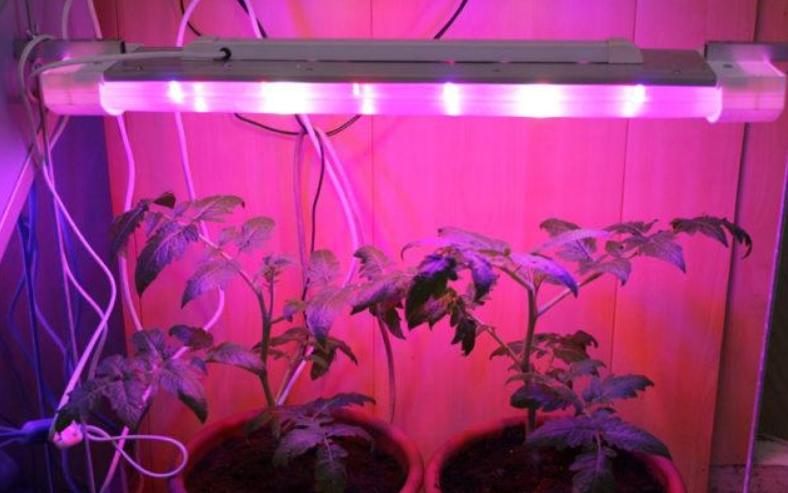
If the plants stand in a poorly lit room or are in a special box, the lamps should work the allotted time.
How to improve seedling lighting
If the lighting efficiency is insufficient, it will be necessary to add one or more lamps to solve the problem. When there is no such a possibility, you can do as follows:
- Place containers with seedlings on the south or east side of buildings, so they will receive the maximum amount of natural light.
- If you cover one or more sides with white paper or cardboard, the light exposure will increase by 15%. This is the simplest solution, which can be implemented in a few minutes.
- In order to distribute the light over a certain area, you can buy thick foil and make a reflector out of it. Due to this you can eliminate the scattering of light and increase its brightness, as well as the uniformity of distribution throughout the container with seedlings.You can make screens of foil in advance.
It is better to buy a lamp in which you can accurately adjust the direction of light.
Video: Basic mistakes when supplementing seedlings.
It is not difficult to choose lamps for growing seedlings at home, if you understand the features of different types and consider their advantages and disadvantages. LED lamps are best, they are safe for the plants and consume the least amount of electricity.
